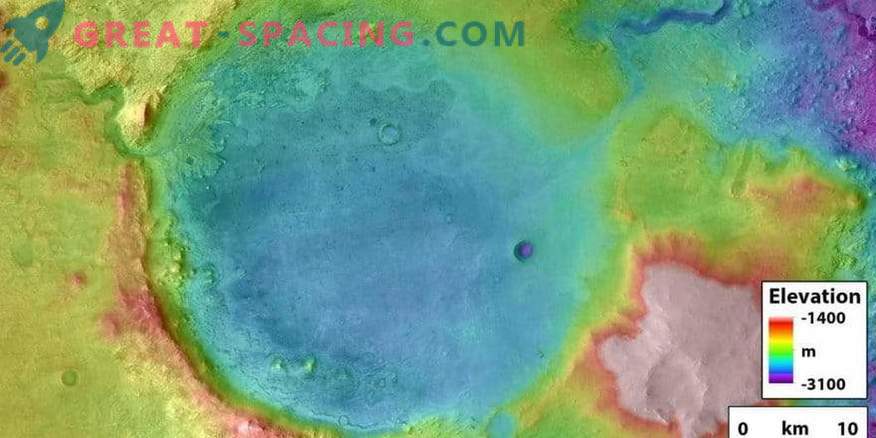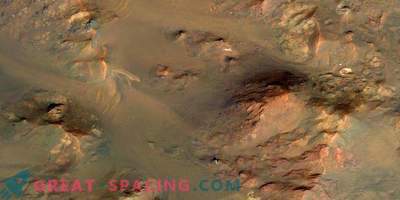
The Martian crater Jezero was once a lake. On the right side, it is clear that the streams have long broken through its edge, creating a canyon
Scientists have identified 24 ancient lakes on Mars, which were once filled with water that broke through the walls, forming steep canyons. NASA's Mars 2020 rover uses the surroundings of one of these lakes in search of traces of ancient life.
Jezero Crater is one of two dozen Martian locations that were tested for how the canyons were formed: mass individual flood events or slow currents in longer time periods. The findings suggest that for the selected canyons played the first scenario with a sudden flood.
These “destroyed” lakes are a common phenomenon, and some of them are quite large or like the Caspian Sea. Everything suggests that this scenario of catastrophic flooding and the rapid spread of canyons can be perceived as an important milestone in the history of the early Martian surface. Scientists have come to this conclusion by examining the relationship between the dimensions of the canyon and the crater edges that once supplied water. The size of the canyon increased in proportion to the size of the nearest lake, which means that all 24 lakes broke through the walls, cutting out canyons in just a few weeks.
Unlike the Earth, traces of canyons and lakes remain imprinted on the surface of Mars, because there are no plate tectonics there. These canyons existed on Mars 3.7 billion years ago, which allows a closer look at the history of the water of the Red Planet. Scientists hope that in the crater Jezero will be able to find ancient sediments with the remnants of a possible Martian life. Therefore, this location was chosen for the next NASA Mars 2020 mission, which will land on the Red Planet in 2021.











































